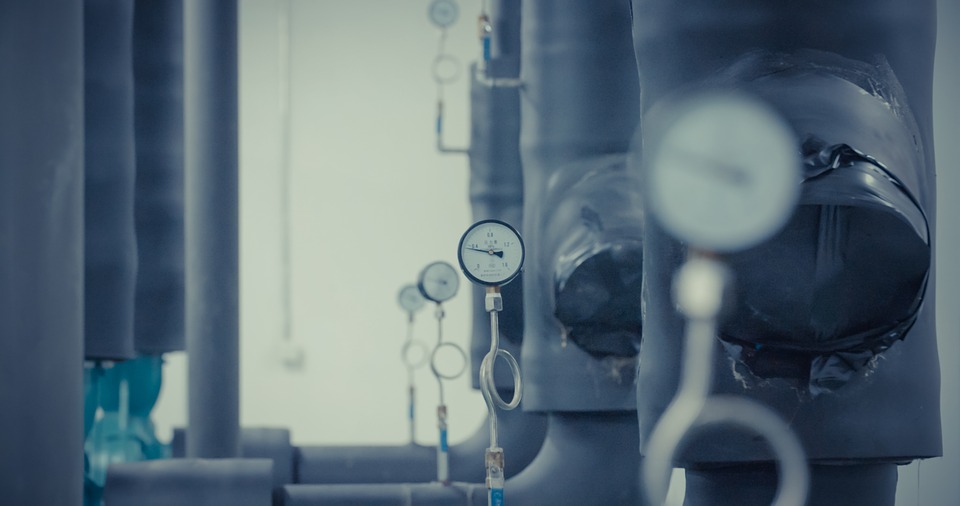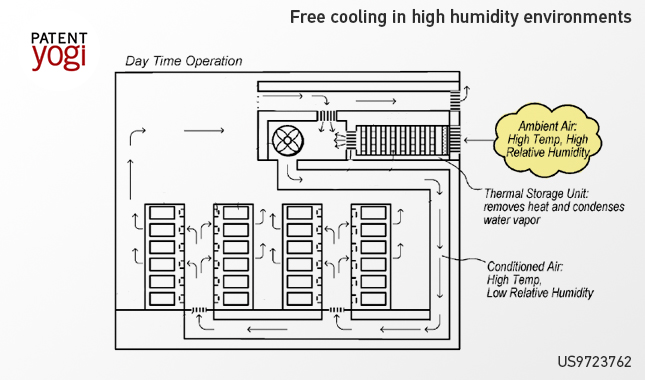Currently, the total area that has been covered by such large computing facilities (such as data centers) is estimated to be 1.9 billion square feet. These large scale computing facilities connect the whole world via the Internet.
Since these computing facilities handle enormous amount of data, a bottleneck or a slight malfunctioning in any system component due to environmental and/or other factors can prove to be outrageous. For instance, such computing facilities generate a large amount of waste heat (around 10 KW), which must be effectively removed so that the components such as, printed circuit boards, mass storage devices, power supplies, and processors work faultlessly and flawlessly. Various companies such as Amazon™ and Google™ have always shown their earnest desire in developing cleaner and greener technology for cooling systems employed in the data centers.

EXISTING COOLING METHODS
There are many data centers which rely on either mechanical cooling (using chillers), evaporative cooling or free cooling for cooling of the components installed in the data centers. All these systems are not efficient as they extract a considerable amount of energy, and resources (such as water for evaporative cooling) thereby making the cooling process a lot more expensive. Further, the data centers which use either the evaporative cooling or the free cooling methods may not be viable to be used at locations where the quantity of water vapor in the air is very high (i.e., in highly humid weather). Therefore, there may still remain a question as to which cooling method should be used that is efficient as well as location independent. The answer lies in the recent patent disclosed by Amazon™. The recent patent from Amazon™ discloses a system facilitating free cooling in high humidity environments.
Technical Details
The system disclosed by Amazon™ uses an air handling system that includes a thermal storage unit. The air handling system is configured to provide temperature and humidity conditioned air to heat producing components in the data center for cooling such components. The air handling system will include a thermal storage unit and an air moving device (e.g., a blower) configured to direct the air from the surroundings external to the data center across the thermal storage unit as the air passes across the thermal storage unit. Under a given set of ambient air conditions for the air in the surroundings, the thermal storage unit is configured to remove thermal energy from the air directed across the thermal storage unit. Under another set of ambient air conditions for the air in the surroundings, the thermal storage unit is configured to release thermal energy previously removed from air passing across the thermal storage unit into the air directed across the thermal storage unit as the air passes across the thermal storage unit.
In an exemplary scenario, the two different set of ambient air conditions may refer to ambient air condition during the daytime and nighttime. For example, a thermal storage unit may remove heat from air during the day and heat air at night by releasing the heat previously removed during the day into the night time air. During operation under daytime ambient air conditions, an air handling system that includes a thermal storage unit may cool incoming air from the surroundings external to a data center below a dew point temperature for the daytime air. This condenses the water vapor in the air. Further, the condensed water vapor will be removed from the air as the air passes through the air handling system, thus reducing the dew point temperature of the air. Subsequently, the air will be heated above the new lower dew point temperature resulting in lower relative humidity air. Likewise, during operation under night time ambient air conditions, the air handling system that includes the thermal storage unit will heat the incoming air with thermal energy stored in the thermal storage unit that was previously removed from air during daytime operation. Heating the air will result in reducing the relative humidity of the air by heating the air further away from its dew point temperature.
Further, in some cases, the thermal storage unit can include a phase change material such as a paraffin wax, salt solution, an inorganic phase change material, or other suitable material with a high heat of fusion. The phase change material will melt (i.e. change from a solid phase to a liquid phase) when air passes across the thermal storage unit under a given set of ambient air conditions, such as day time ambient air conditions. The phase change material will subsequently solidify (and therefore recharge) when air passes across the thermal storage unit under another set of ambient air conditions, such as night time ambient air conditions. The melting of the phase change material may remove thermal energy from the air and cool the air as it passes across the thermal storage unit. The cooler air will be cooled below a dew point temperature of the air and therefore condense water vapor out of the air. Subsequently, the cooled air will be mixed with return air, thus slightly heating the mixture of air and lowering the relative humidity of the mixture of air. Also, solidifying the phase change material will result in thermal energy being released into the air and heating the air as the air passes across the thermal storage unit. The heating of the air will result in the relative humidity of the air being reduced.
What’s your take?
We hope you find this blog interesting. If you did, please let us know your ideas through your valuable comments in the comments section.
Publication Number: US9723762B1
Patent Title: Free cooling in high humidity environments
Publication date: 2017-08-01
Filing date: 2016-03-15
Inventors: Peter George Ross, Osvaldo P. Morales
Original Assignee: Amazon Technologies Inc
US9723762



